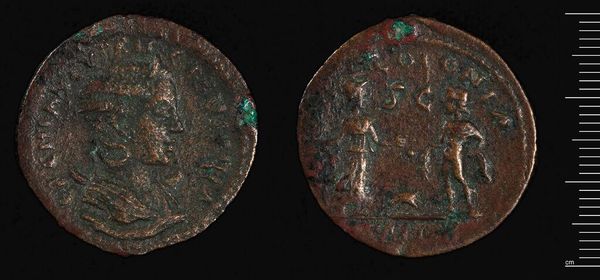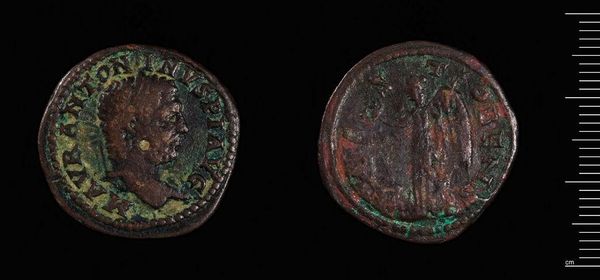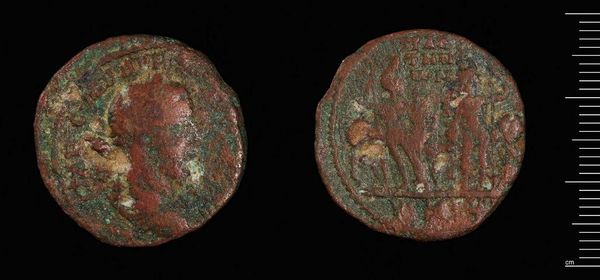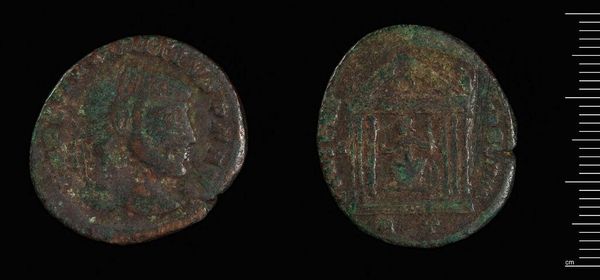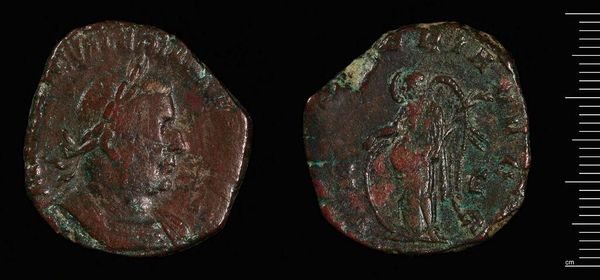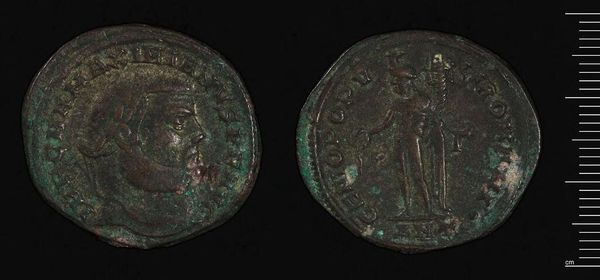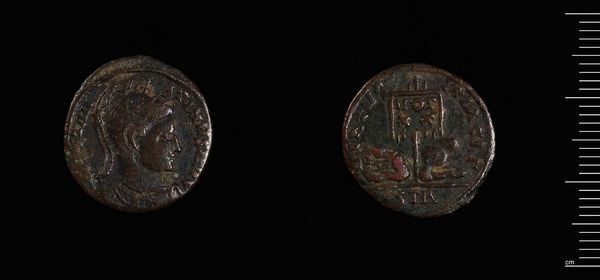
Dimensions: 5.93 g
Copyright: CC0 1.0
Curator: This bronze follis was created for Constantine I, also known as Constantine the Great. Weighing just under 6 grams, it's a small object that speaks volumes. Editor: Its age is palpable. It evokes a sense of immense historical weight, that patina whispers of centuries passed. Curator: Precisely! The portrait of Constantine, rendered in profile, embodies the power he sought to project. And on the reverse, a temple facade suggests a dedication, perhaps to a divine authority he wished to associate himself with. Editor: These coins were so crucial as propaganda. Think of the messages being circulated; images establishing power, legitimacy, even divinity. It's fascinating to consider how these small objects shaped public perception. Curator: Absolutely. The temple icon carries cultural memory, reminding people of traditional Roman values even as Constantine shifted towards Christianity. It represents the image of a transitional era, bridging the old and new. Editor: It shows how rulers manipulate symbols to shape their image. A tiny coin, a huge statement about power and its representation. Curator: A potent reminder that even the smallest object can carry enormous symbolic and political weight. Editor: Indeed, food for thought about the narratives we embed in the objects around us even today.
Comments
No comments
Be the first to comment and join the conversation on the ultimate creative platform.
